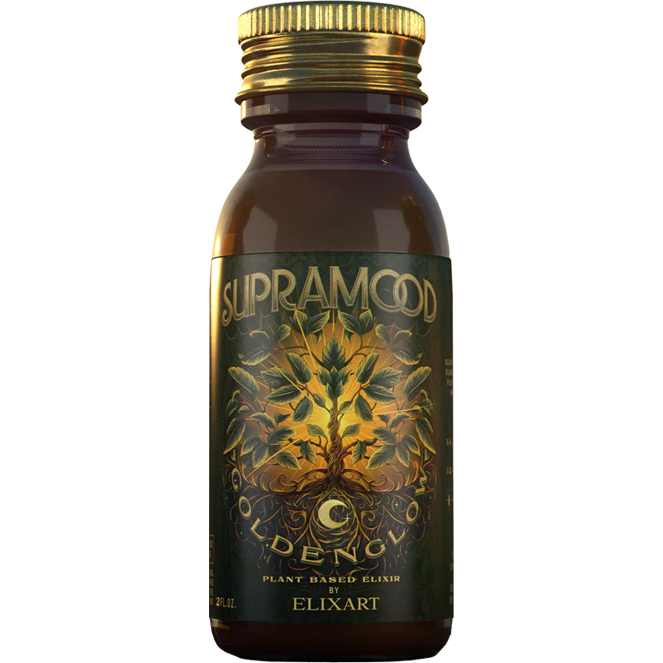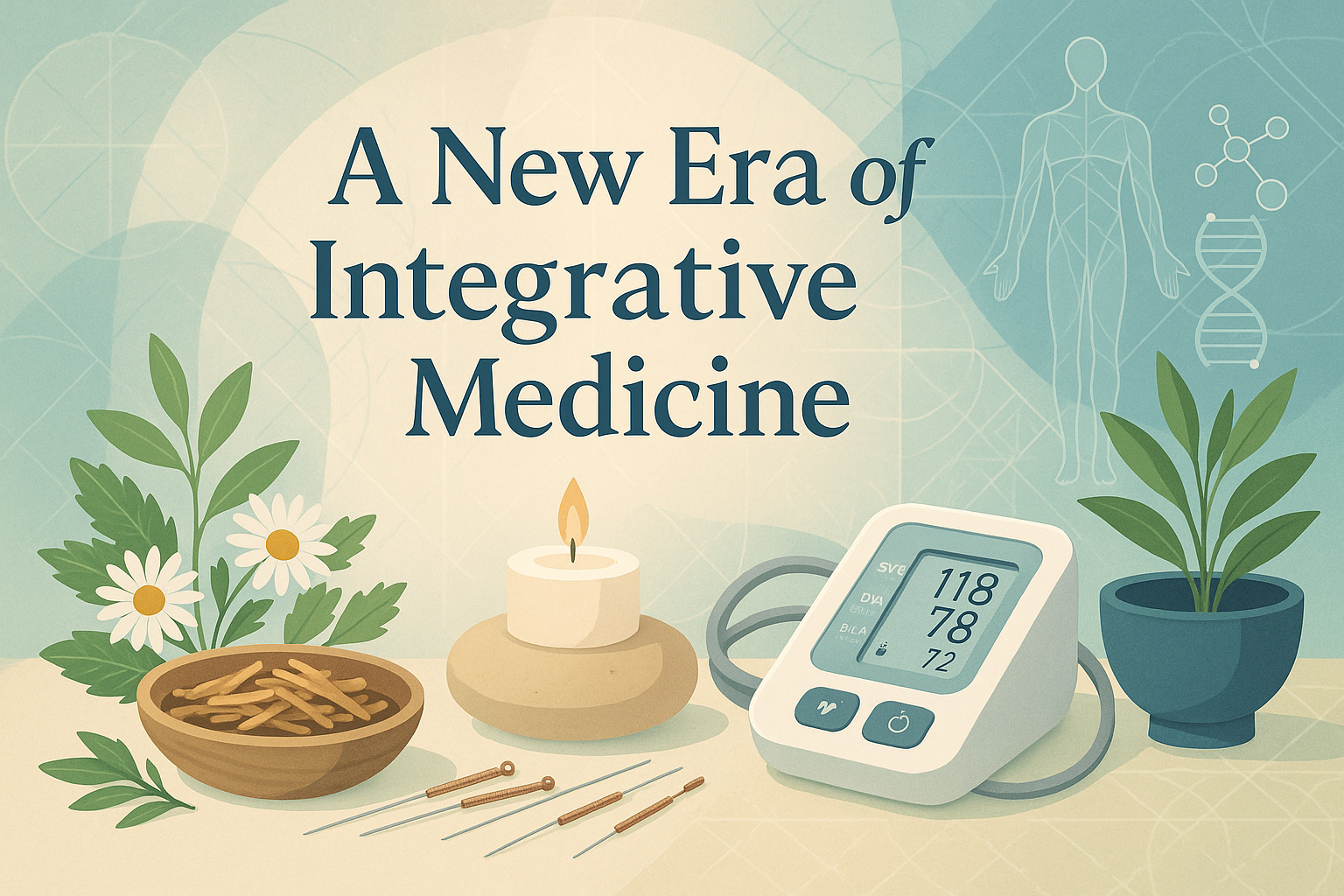In today's healthcare landscape, there is an ongoing discussion about herbal medicine vs modern pharmaceuticals. Each method has its own advantages and challenges.
- Herbal medicine is based on long-standing practices like Traditional Chinese Medicine (TCM) and Ayurveda. It uses natural remedies derived from plants to treat various conditions.
- Modern pharmaceuticals, on the other hand, are the result of extensive scientific research and clinical trials. They provide precise treatments that have been proven effective.
As patients increasingly seek holistic care that combines different approaches, it becomes crucial to strike a balance between these two options. By integrating herbal medicine with modern pharmaceuticals, we can potentially:
- Improve treatment outcomes
- Enhance patient well-being
This approach acknowledges the importance of looking at health from all angles – not just physical symptoms but also emotional and spiritual aspects of healing.
To fully grasp this balance, we must explore how traditional and modern practices intersect and support each other. It requires an open-minded mindset that appreciates both ancient wisdom and current scientific advancements. With this understanding, healthcare providers can offer more personalized and efficient care choices based on individual requirements.
Traditional Medicine and Modern Medicine: A Convergence
Traditional medicine and modern medicine have a deeply intertwined history. Ancient practices like Traditional Chinese Medicine (TCM), Ayurveda, Kampo, and Unani have provided the groundwork for many modern pharmaceutical advancements. These age-old systems of healing offer a rich tapestry of knowledge about the human body and natural remedies that continue to inspire contemporary medical research.
Exploring the Historical Relationship
Traditional medicine has been practiced for thousands of years, long before the advent of modern pharmaceuticals. Healers in ancient cultures relied on herbal concoctions, dietary regimens, and physical therapies to treat ailments. This wealth of empirical knowledge has guided scientists in identifying bioactive compounds in plants and other natural sources.
Traditional Medicine Systems:
- Traditional Chinese Medicine (TCM): Utilizes herbs, acupuncture, and qi-gong to balance the body's energies.
- Ayurveda: Focuses on balancing bodily doshas through diet, herbal treatments, and yoga.
- Kampo: Japanese adaptation of TCM with a focus on herbal formulas.
- Unani: Originating from Greek medicine, incorporates dietary practices, herbal remedies, and physical therapies.
Influence on Modern Pharmaceuticals
The influence of traditional medicines on modern pharmaceuticals is profound:
- Discovery of Active Compounds: Many modern drugs are derived from plants used in traditional medicine. For instance, aspirin was developed from willow bark used in ancient Greece.
- Pharmacological Research: Traditional remedies often serve as the basis for pharmacological studies aimed at developing new medications.
- Holistic Approaches: The holistic perspectives of traditional medicine encourage integrative approaches in healthcare that combine conventional treatments with complementary therapies.
Understanding this convergence allows for a balanced approach to healthcare that leverages the strengths of both traditional and modern practices.
The Role of Traditional Medicine in Drug Development
Traditional medicine has played a significant role in the discovery of new drugs, particularly through research on natural products. This type of research focuses on studying the medicinal plants and herbs used in traditional systems like Traditional Chinese Medicine (TCM) and Ayurveda. By identifying active compounds from these sources, scientists have been able to create several modern medications.
Here are some key reasons why traditional medicine is valuable in drug development:
- Natural Products: Many natural products derived from traditional medicines have unique chemical diversity and biological activities. This diversity is crucial for drug development as it offers a wide range of therapeutic options.
- Research Programs: These programs often focus on the isolation and characterization of bioactive compounds. For example, the anti-malarial drug artemisinin was derived from Artemisia annua, a plant used in TCM.
- Chemical Diversity: The unique chemical structures found in traditional medicines provide novel templates for drug synthesis. These structures are often more complex and diverse than those found in synthetic libraries.
- Biological Activities: Traditional medicines are rich in compounds with a variety of biological activities, such as anti-inflammatory, antimicrobial, and antioxidant properties. These activities can be harnessed to develop new treatments for diseases that currently lack effective therapies.
By exploring these aspects, we can leverage centuries-old knowledge from traditional medicine to enhance the development of modern pharmaceuticals and discover innovative approaches to treatment.
Inclusion of Traditional Medicine in Global Healthcare Systems
Traditional medicine is becoming increasingly recognized within global healthcare systems. As healthcare moves towards a more holistic approach, integrating traditional medicine practices offers a comprehensive strategy for patient care. These practices provide alternative treatment options that often complement conventional therapies, addressing various health issues through natural remedies and age-old techniques. The incorporation of herbal treatments, acupuncture, and other traditional methods into mainstream healthcare not only caters to patient preferences but also broadens the scope of available therapeutic modalities.
The Benefits of Integrating Traditional Medicine
- Offers alternative treatment options
- Complements conventional therapies
- Addresses various health issues naturally
- Provides age-old techniques for healing
The Role of Traditional Medicine in Global Healthcare
- Recognizing the importance of holistic care
- Understanding the value of natural remedies
- Exploring traditional healing techniques
The Impact on Patient Care
- Enhanced treatment plans tailored to individual needs
- Increased patient satisfaction and engagement
- Improved health outcomes through personalized care
Case Study: The Growing Recognition of Traditional Medicine in Different Countries
Several countries have made significant strides in integrating traditional medicine into their national health policies:
- China: Traditional Chinese Medicine (TCM) is widely accepted and used alongside modern medical treatments. Hospitals often have dedicated TCM departments, providing patients with a choice between or combination of treatments.
- India: Ayurveda is an integral part of the Indian healthcare system. Government initiatives support Ayurvedic education and practice, ensuring its availability across the nation.
- Japan: Kampo medicine, derived from ancient Chinese medicine, is well-regarded in Japan. Kampo formulations are covered by national health insurance, reflecting their integration into the healthcare system.
- South Korea: Korean traditional medicine, including practices like acupuncture and herbal medicine, is incorporated into public health services. Universities offer formal education in traditional medicine, promoting its scientific study and application.
The growing recognition of traditional medicine globally underscores its potential to enrich healthcare systems by offering diverse treatment options tailored to individual needs.
Examining the Benefits and Limitations of Herbal Medicines and Modern Pharmaceuticals
The Advantages and Potential Efficacy of Herbal Remedies in Treating Various Ailments
Herbal medicines have been used for centuries to treat a wide range of ailments. They offer several benefits:
- Natural Ingredients: Herbal remedies often use natural ingredients, which can be gentler on the body compared to synthetic chemicals.
- Fewer Side Effects: Many herbal medicines have fewer side effects, making them a preferable option for those sensitive to pharmaceuticals.
- Cost-Effective: Herbal treatments can be more affordable than modern pharmaceuticals, especially in regions where healthcare costs are high.
- Cultural Acceptance: In many cultures, herbal medicine is deeply ingrained and trusted by communities.
Examples include:
- Echinacea for boosting the immune system
- Turmeric for its anti-inflammatory properties
- Ginkgo Biloba for cognitive support
Safety Concerns and Potential Risks Associated with Herbal Medicines
Despite their benefits, herbal medicines come with limitations and potential risks:
- Lack of Standardization: Unlike pharmaceuticals, herbal remedies often lack standardized dosages and quality control, leading to inconsistencies in effectiveness.
- Potential Interactions: Herbal treatments can interact with prescribed medications, sometimes resulting in harmful effects. For instance, St. John’s Wort can interfere with antidepressants.
- Toxicity Risks: Certain herbs can be toxic if not used correctly. For example, Aristolochia has been linked to kidney failure and cancer.
- Limited Scientific Research: Many herbal medicines have not undergone rigorous clinical trials, making their efficacy and safety less certain.
Balancing the advantages and limitations of both herbal medicines and modern pharmaceuticals is key to comprehensive healthcare.
Finding Common Ground: Exploring Integrative Approaches to Healthcare
Seeking balance in healthcare involves embracing integrative medicine, which combines the strengths of both traditional and modern medical practices. This approach focuses on treating the whole person rather than just the symptoms, recognizing the interconnectedness of mind, body, and spirit.
Understanding Integrative Medicine
Integrative medicine emphasizes a holistic approach to healing. It aims to:
- Address physical, emotional, mental, social, and spiritual dimensions of health.
- Utilize safe and effective therapies from both conventional and alternative medicine.
- Foster a collaborative relationship between patient and practitioner.
Core Principles
Integrative medicine is guided by several core principles:
- Patient-Centered Care: Tailoring treatments to individual needs and preferences.
- Evidence-Based Practice: Combining the best available research with clinical expertise.
- Prevention and Wellness: Prioritizing lifestyle changes and preventive measures to maintain health.
Benefits of a Holistic Approach
A holistic approach can lead to improved patient outcomes by:
- Enhancing overall well-being through comprehensive care.
- Reducing reliance on pharmaceuticals by incorporating natural remedies.
- Encouraging proactive health management and self-care practices.
By seeking balance in healthcare through integrative medicine, you can achieve a more fulfilling and effective healthcare experience that respects both traditional wisdom and modern scientific advancements.
Examples of Complementary and Alternative Medicine (CAM) Therapies
Complementary and Alternative Medicine (CAM) therapies encompass a wide range of practices that fall outside the realm of conventional medicine. These therapies can be categorized into several distinct groups:
1. Biologically Based Practices
- Dietary Supplements: These include vitamins, minerals, herbs, and other botanicals.
- Herbal Remedies: Utilization of plants or plant extracts for therapeutic benefits.
- Probiotics: Live microorganisms that can provide health benefits when consumed.
2. Manipulative and Body-Based Practices
- Chiropractic Care: Focuses on diagnosing and treating mechanical disorders of the musculoskeletal system, particularly the spine.
- Osteopathy: Emphasizes physical manipulation of muscle tissue and bones.
- Massage Therapy: Involves the manipulation of soft tissues to enhance health and well-being.
3. Energy Healing
- Reiki: A Japanese technique for stress reduction and relaxation that also promotes healing through energy transfer.
- Acupuncture: Involves inserting needles into specific points on the body to balance energy flow.
- Qigong: Integrates physical postures, breathing techniques, and focused intention for energy cultivation.
4. Whole Medical Systems
- Traditional Chinese Medicine (TCM): A holistic approach involving herbal medicine, acupuncture, and dietary therapy.
- Ayurveda: An ancient Indian system of medicine focusing on balancing bodily systems through diet, herbal treatment, and yogic breathing.
- Homeopathy: Uses highly diluted substances that aim to trigger the body’s natural healing processes.
5. Mind-Body Therapies
- Meditation: Practices aimed at training attention and awareness to achieve mental clarity and emotional calmness.
- Yoga: Combines physical postures, breathing exercises, and meditation to promote holistic wellness.
- Hypnotherapy: Employs guided relaxation and focused attention to achieve a heightened state of awareness for therapeutic purposes.
Understanding these diverse categories allows you to explore various CAM therapies tailored to individual health needs.
Striking a Balance: The Case of Cancer Treatment and CAM Therapies
The integration of Complementary and Alternative Medicine (CAM) therapies in cancer treatment presents a multifaceted challenge. Cancer patients often explore CAM therapies to complement conventional treatments, seeking benefits such as reduced side effects and improved quality of life. However, the complexities of combining these approaches necessitate careful consideration.
Issues to Consider:
- Safety Concerns: Not all CAM therapies are safe for cancer patients. Certain herbal remedies may interfere with chemotherapy or radiation, potentially reducing their effectiveness or causing harmful interactions.
- Lack of Regulation: Many CAM therapies lack rigorous regulatory oversight. This can lead to variability in product quality and concentration, raising safety concerns for patients.
- Evidence-Based Support: While some CAM therapies have shown promise in clinical studies, others lack robust scientific evidence. Patients need to rely on well-researched options to ensure efficacy and safety.
Safety Precautions:
- Consultation with Healthcare Providers: Cancer patients should always discuss any intended use of CAM therapies with their oncologist or primary care provider. This ensures that any complementary approach is safe and does not conflict with conventional treatments.
- Informed Decision-Making: It is crucial for patients to make informed decisions based on reliable sources and expert advice. Understanding the potential risks and benefits helps in navigating the complex landscape of CAM therapies.
- Monitoring and Adjustment: Regular monitoring by healthcare professionals can help manage any adverse effects or interactions between CAM treatments and conventional cancer therapies.
Balancing CAM therapies within cancer treatment involves a careful evaluation of safety and efficacy, ensuring that patients receive comprehensive care tailored to their individual needs.
Empowering Informed Choices: Navigating the Landscape of Herbal Medicine and Modern Pharmaceuticals
Understanding the balance in healthcare between herbal medicine and modern pharmaceuticals is crucial for making informed decisions. A personalized approach to healthcare decisions emphasizes the integration or choice between herbal and pharmaceutical treatments based on individual needs. This means:
1. Assessing Personal Health Conditions
Tailoring treatment plans according to specific health conditions, considering factors like age, lifestyle, and existing medical history.
2. Evaluating Efficacy and Safety
Weighing the benefits of herbal remedies against potential side effects or interactions with conventional drugs.
Experts play an essential role in guiding these decisions. Research provides a robust foundation for understanding how different treatments work, their effectiveness, and safety profiles.
3. Consulting Healthcare Professionals
Seeking advice from doctors, pharmacists, and practitioners experienced in both traditional and modern medicine ensures that treatment choices are well-informed.
4. Staying Updated with Scientific Research
Keeping abreast of the latest studies on herb-drug interactions, new discoveries in natural product research, and advancements in pharmaceutical technology aids in making sound healthcare choices.
An informed approach empowers patients to navigate the complex landscape of herbal medicine and modern pharmaceuticals effectively, ensuring optimal health outcomes tailored to their unique needs.
The Way Forward: Towards an Integrated Future in Healthcare
Embracing the Best of Both Worlds: Fostering Collaboration Between Traditional and Modern Medical Practitioners
The future of healthcare lies in the integration of herbal medicine and modern pharmaceuticals. By fostering collaboration between traditional and modern medical practitioners, we can create a more holistic approach to patient care. This synergy allows for:
- Enhanced Treatment Options: Combining the strengths of both systems can offer patients a wider array of therapeutic choices.
- Improved Patient Outcomes: Integrative approaches may lead to better health outcomes by addressing not only physical symptoms but also mental and emotional well-being.
- Cost Efficiency: Utilizing herbal remedies alongside pharmaceuticals can potentially reduce healthcare costs by providing effective, low-cost treatment options.
Case studies from countries like China and India illustrate the benefits of integrative medicine practices. For instance, Traditional Chinese Medicine (TCM) often works in tandem with conventional therapies to treat chronic illnesses, showcasing the potential for successful integration.
Looking Ahead
The key to finding balance in healthcare is embracing the strengths of both herbal medicine and modern pharmaceuticals. Encouraging ongoing research, promoting education among healthcare providers, and developing standardized protocols will be crucial steps in this journey. By doing so, we ensure that patients receive comprehensive, effective care tailored to their unique needs.
Navigating the landscape of herbal medicine vs modern pharmaceuticals requires a commitment to collaboration, innovation, and patient-centered care. The path forward promises a more inclusive and effective healthcare system that leverages the best of both worlds.
FAQs (Frequently Asked Questions)
What is the historical relationship between traditional medicine and modern medicine?
The historical relationship between traditional medicine and modern medicine involves the convergence of practices such as traditional Chinese medicine, Ayurveda, Kampo, and Unani with modern pharmaceutical approaches. Traditional medicines have influenced and shaped modern pharmaceutical practices over time.
How has traditional medicine contributed to drug development?
Traditional medicine has contributed to drug development through natural product research programs, which have led to the discovery of new drugs. This is achieved by harnessing the unique chemical diversity and biological activities found in traditional medicines for therapeutic purposes.
How can traditional medicine be incorporated into global healthcare systems?
Traditional medicine can be incorporated into global healthcare systems by integrating its practices into mainstream healthcare for comprehensive patient care. This involves recognizing the benefits and value of traditional medicine in different countries.
What are the potential benefits and limitations of herbal medicines and modern pharmaceuticals?
Herbal medicines offer advantages and potential efficacy in treating various ailments. However, safety concerns and potential risks are associated with herbal medicines. On the other hand, modern pharmaceuticals also have their own set of benefits and limitations.
What is integrative medicine, and how does it seek to strike a balance in healthcare?
Integrative medicine emphasizes a holistic approach to healing by seeking balance in healthcare. It aims to understand the concept of integrative medicine and its emphasis on combining traditional and modern medical practices for comprehensive patient care.
What are some examples of Complementary and Alternative Medicine (CAM) therapies?
Examples of CAM therapies include biologically based practices (dietary supplements, herbal remedies, probiotics), manipulative and body-based practices (chiropractic care, osteopathy, massage therapy), energy healing (reiki, acupuncture, qigong), whole medical systems (traditional Chinese medicine, Ayurveda, homeopathy), and mind-body therapies (meditation, yoga, hypnotherapy).







Leave a comment
This site is protected by hCaptcha and the hCaptcha Privacy Policy and Terms of Service apply.